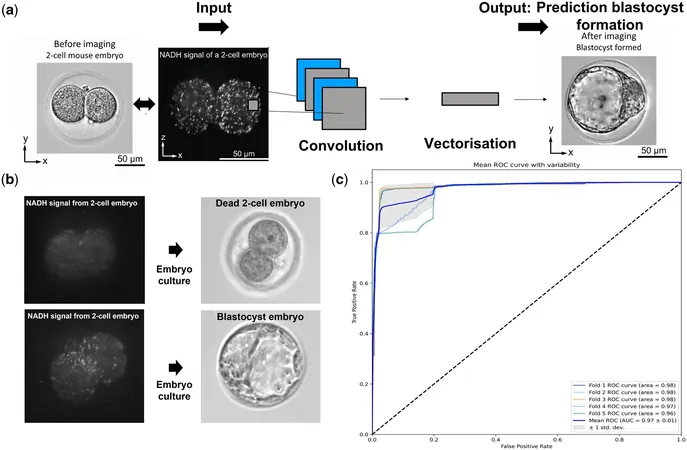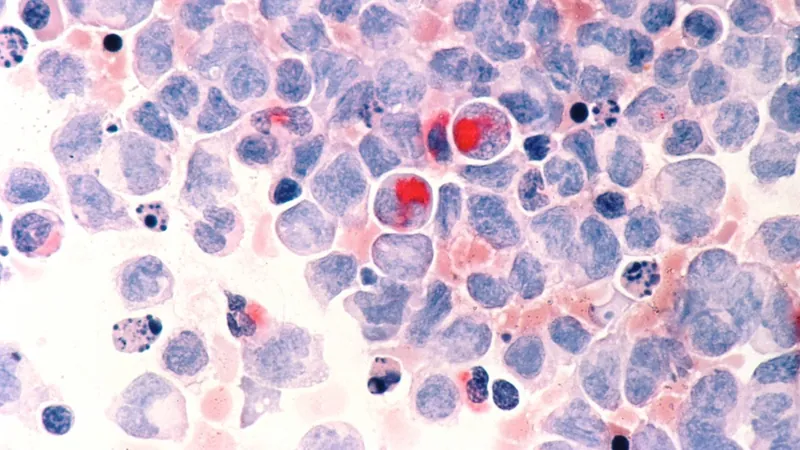
Groundbreaking IVF Microchip Revolutionizes Embryo Selection: A New Era for Infertility Treatments?
2024-11-11
Author: Jia
Introduction
In a remarkable advancement for the world of in vitro fertilization (IVF), researchers at Monash University have unveiled a groundbreaking light-emitting microchip designed to accurately measure the energy produced by embryos—an essential marker of their health. This innovative technology, detailed in the esteemed journal *Human Reproduction*, could potentially transform embryo selection processes, leading to higher success rates for IVF treatments.
How the Microchip Works
The microchip, about the size of a kangaroo head on an Australian $1 coin, employs advanced micro lenses to emit light onto individual embryos, enabling the measurement of their energy output without causing any harm. These energy readings provide crucial insights into embryo viability, paving the way for healthcare professionals to select the healthiest embryos for implantation.
Collaboration for Clinical Trials
Supporting this development, a collaboration is underway with AI specialists and mechanical engineers at UNSW Sydney, aiming to propel the technology toward clinical trials on humans.
Current Embryo Selection Methods
Currently, most embryo selection methods heavily rely on the expertise of operators using standard optical microscopes. Unfortunately, this often leads to dependence on costly and invasive genetic testing, which is not foolproof and can add significant stress to couples already facing emotional challenges during their IVF journey. Despite these advancements, traditional IVF still boasts a modest success rate of around 30%, frequently necessitating multiple attempts before welcoming a baby.
Expert Insights
Dr. Fabrizzio Horta, who has transitioned from Monash to UNSW to lead this innovative project, has expressed optimism regarding the potential for this new microchip. Unlike existing high-cost systems that can exceed $1 million and are impractical for widespread clinical use, Dr. Horta emphasizes that this new device can be produced at a fraction of the cost, making it accessible for clinics and potentially revolutionizing the industry.
The Benefits of the Microchip
"The microchip allows us to reconstruct detailed images of an embryo’s metabolic activity, which may reveal genetic or metabolic abnormalities," Dr. Horta explains. "Unlike invasive methods, this technology preserves the integrity of the embryos during analysis, significantly improving our selection process."
Implications for Couples
The implications of such advancements may offer a lifeline to couples facing fertility challenges. The ability to identify viable embryos rapidly and accurately could expedite the IVF process, potentially leading to successful outcomes in much shorter timeframes. Many hopeful parents are burdened not only by the emotional toll of repeated cycles but also by the financial strain associated with prolonged treatments.
Commercialization Efforts
As Monash University files for a patent to secure this cutting-edge technology, the research team is actively pursuing funding opportunities to create a spinout company aimed at global commercialization. The goal is clear: to make embryo viability assessment more affordable and accessible, ultimately changing the narrative for countless couples struggling with infertility.
Conclusion
In a world where time and emotional investment are critical, this microchip represents hope—an innovative solution that could facilitate quicker and safer paths to parenthood, reducing the anxiety and financial burden that often accompanies IVF. Stay tuned as this promising technology continues to develop—could it be the key to unlocking your dreams of parenthood?



 Brasil (PT)
Brasil (PT)
 Canada (EN)
Canada (EN)
 Chile (ES)
Chile (ES)
 España (ES)
España (ES)
 France (FR)
France (FR)
 Hong Kong (EN)
Hong Kong (EN)
 Italia (IT)
Italia (IT)
 日本 (JA)
日本 (JA)
 Magyarország (HU)
Magyarország (HU)
 Norge (NO)
Norge (NO)
 Polska (PL)
Polska (PL)
 Schweiz (DE)
Schweiz (DE)
 Singapore (EN)
Singapore (EN)
 Sverige (SV)
Sverige (SV)
 Suomi (FI)
Suomi (FI)
 Türkiye (TR)
Türkiye (TR)